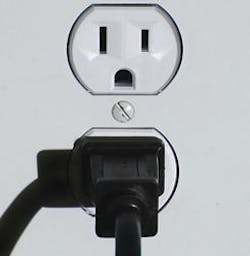A New DC Power Standard
Unless you’ve been paying close attention, the EMerge Standard is probably something you haven’t heard much about. But, that’s going to change, thanks to the San Ramon, CA-based EMerge Alliance.
The group was established to encourage the swift adoption of safe, low-voltage DC power distribution and its use in the interior infrastructure of commercial buildings. The expected results of the EMerge Standard? Increased efficiency, reduced energy usage, and improved sustainability without forgoing quality or performance.
According to Joel Zwier, product development category manager at Grand Rapids, MI-based Steelcase, the EMerge Standard concept can be compared to the concept of a hybrid automobile. “A hybrid automobile switches from gasoline power to electrical power to maximize fuel efficiency. Building electrical power can be thought of similarly, with EMerge promoting a new hybrid layer of AC/DC power distribution.” The current focus of the EMerge Standard is on using the ceiling plane as a power-distribution path. As EMerge develops, so will the solutions, which will include floors, walls, and furniture.
What does this mean for facilities professionals? “For anyone interested in protecting the bottom line, there are documentable financial benefits,” says Bruce D. Graham, president, projects/design and construction services, global workplace solutions, Milwaukee-based Johnson Controls. (For example: A typical EMerge ceiling and lighting system costs 10-percent less to install than a conventional system.) Graham also points out that low-voltage ceiling grids facilitate easy maintenance and configurability – the fixtures aren’t hardwired, and you don’t need a licensed electrician for every adjustment or upgrade.
The EMerge Standard will allow you to connect directly to locally generated alternative energy sources (solar and others), providing power without transformation. “For example, a standard office building with solar panels on the roof has to traditionally transform the power into standard voltage and incorporate it into the existing distribution grid. With a low-voltage power distribution, you can isolate the solar power and operate equipment on a separate grid. When energy consumption is low, such as overnight, you can have a battery back-up system that then recharges during the day,” says Graham. The EMerge Standard contributes to sustainability in other ways, too. EMerge equipment is flexible and reusable, decreasing construction waste and the frequent need for new products. Graham says that a school’s clock system is a good case in point: “Traditionally, building clocks were hardwired to be synchronized with each other. Later, these clocks were reconfigured to run off of individual small batteries to save power. Now, instead of running these clocks on batteries that need to be replaced constantly, the clocks can be wired into the DC ceiling grid.”
Here are a few other examples of things the EMerge Standard will allow you to do:
- Increase or decrease overhead and task lighting by rearranging fixtures based on needs.
- Make the conversion to DC power on a space-by-space basis vs. reconfiguring the entire building at once.
- Take equipment with you and reuse it, saving on purchasing costs.
The EMerge Standard will be rolled out in the next few months. Once it is complete, products and services that meet it will be available in late 2009.
Leah B. Garris ([email protected]) is managing editor at Buildings magazine.
